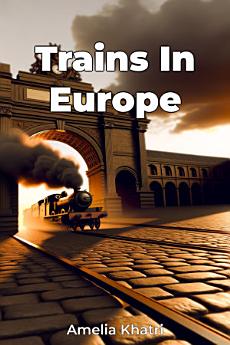Trains In Europe
About this ebook
The narrative unfolds through three distinct periods:
the pioneering steam age (1830-1900),
the era of electrification and standardization (1900-1950), and
the modern high-speed rail revolution (1950-present).
Through detailed case studies of iconic routes like the Orient Express and analysis of engineering achievements, the book illuminates how railways standardized time zones, influenced architectural design, and accelerated economic growth across borders. Particularly fascinating is the exploration of how rail gauge standardization and signaling systems development enabled seamless international travel.
This comprehensive work balances technical expertise with engaging storytelling, using maps, historical photographs, and engineering diagrams to illustrate key developments. The book uniquely positions European railway development as a crucial catalyst for modernization, demonstrating how rail networks continue to shape contemporary discussions about sustainable transport, environmental planning, and continental integration. Whether for transportation historians, urban planners, or railway enthusiasts, this work offers valuable insights into how rail infrastructure has defined and continues to influence European identity and development.








